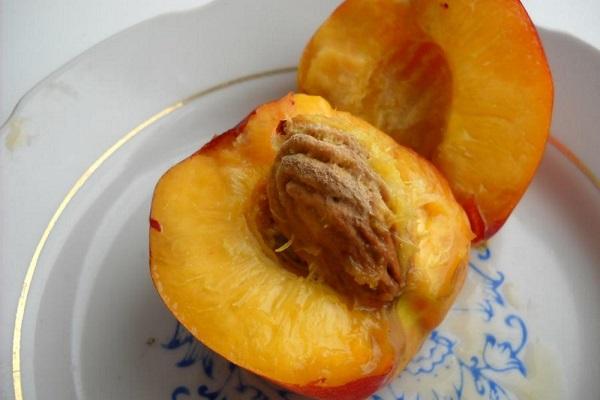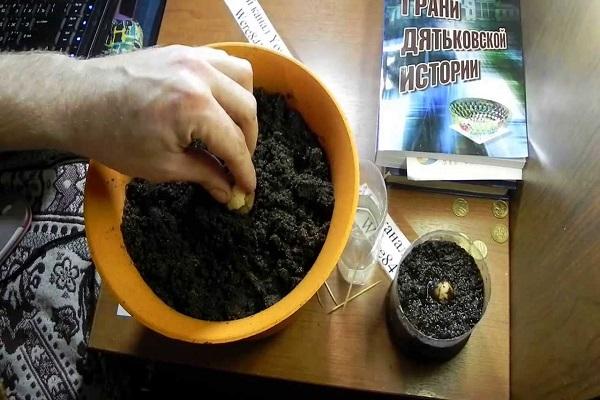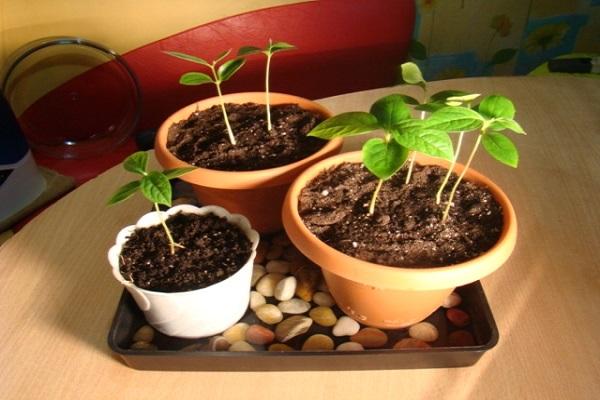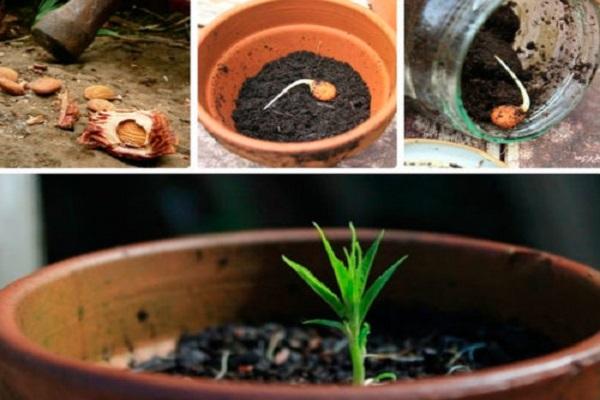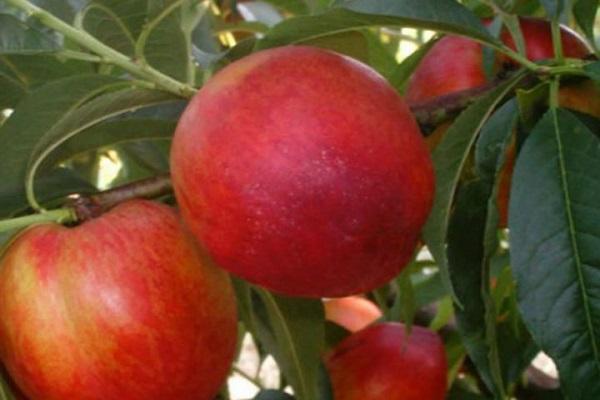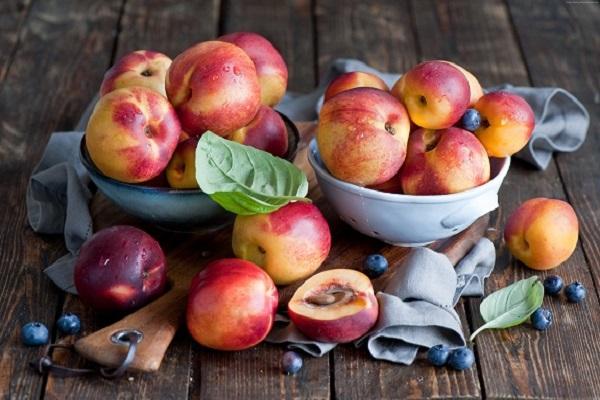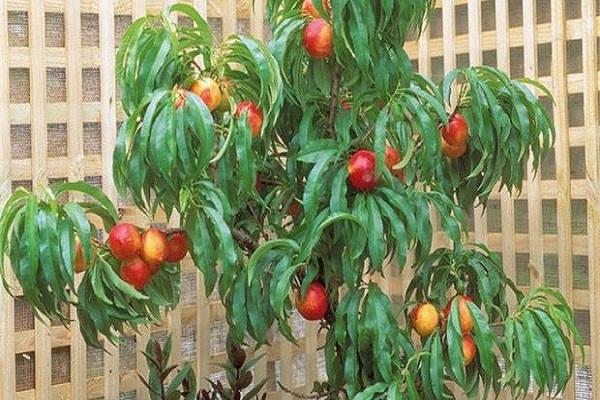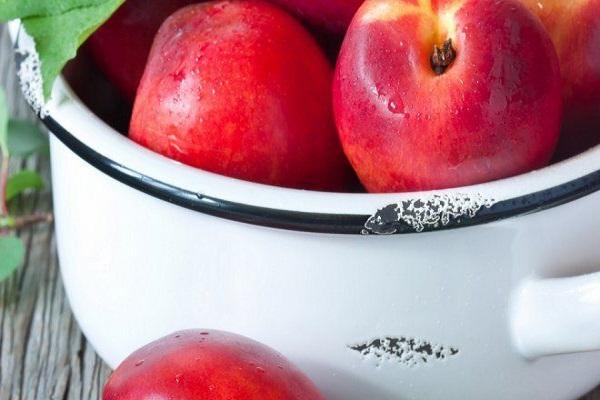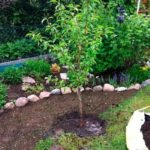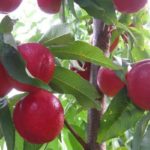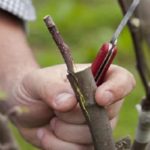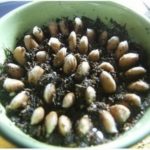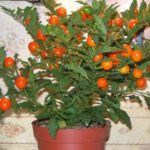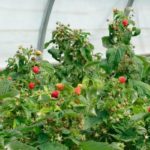Nectarine is classified as a variety of peach. But this type of fruit crop is more unpretentious and is able to bear fruit in a temperate climate. Many gardeners are interested in how to grow nectarines from seeds and whether it is possible to get a positive result in growing a fruit tree in this way.
- Is it possible to grow nectarines from seeds?
- How to choose a variety to grow
- Cultivation
- Requirements for the selection of planting material
- Preparing seeds for planting
- Technology for planting nectarines in the ground
- Caring for peach sprouts
- Earth
- Temperature
- Lighting
- Watering
- Diseases, pests and possible difficulties during cultivation
- How and when to replant a tree
Is it possible to grow nectarines from seeds?
Before you start growing nectarine from seed at home, you need to determine whether the fruit tree can develop in a particular region and whether there are suitable conditions for this. Although the crop is cold-resistant, severe frosts in winter can damage the tree. It will take a long time to recover and will not be able to fully bear fruit.
Stone fruits are often grown from seeds. And nectarine is no exception. Here you need to approach the selection of seed material carefully. Not all seeds are suitable for plant propagation. Store-bought fruits do not reach full ripeness when they are picked from the branches. Therefore, it is not worth taking a seed from them for propagation. They use the material that is grown in the garden located in the same region.
How to choose a variety to grow
Typically, fruit trees are propagated by purchasing seedlings. To propagate nectarines from seeds, select a fruit variety that quickly adapts to the proposed climatic conditions. By patiently germinating the seed and caring for the sprouts, after a few years you will get a fruit-bearing tree. But to achieve this, they pay attention to nectarine varieties that are adapted to growing conditions.
Material taken from fruits cultivated in Turkey and Italy will not take root in Russia. It is better to take a seed for nectarine propagation from hybrids bred by Crimean breeders:
- The Crimean variety is known for its frost resistance and unpretentiousness. A medium-sized tree can produce up to 50 kilograms of tasty, hairless yellow peaches with a pink blush. The weight of one nectarine reaches 200 grams.
- Winter-hardy and high-yielding nectarine Crimson Gold ripens early. The rounded fruits are covered with thin yellowish skin with ruddy stripes.Their flesh is tender, juicy, and medium fibrous.
- The compact tree of the Kolonovidny variety is distinguished by its fertility. Suitable for growing in small areas.
- Kiev nectarine can be cultivated in areas with a temperate climate. The tree grows up to 4 meters. The fruits are harvested in early July.
- The Nikitsky 85 hybrid reaches 2 meters in height. A tree with a rounded crown will decorate the site and bear a lot of fruit. The nectarines of this variety are sweet, with tender pulp, easily separated by a stone.
The seeds from these varieties of fruit will allow a new plant to appear in the garden.
Cultivation
Planting nectarines on the site begins with preparatory work. The vegetation of the plant depends on how they are carried out.
Requirements for the selection of planting material
The collected nectarine fruits must be overripe for planting. Pay attention to the pulp. Suitable material is one that is not damaged or rotten. Peaches that are infected with pathogenic fungi and viruses cannot be used for cultivation. The bone inside should be intact and even in color. It is washed several times to remove any remaining pulp from the grooves on the surface of the shell.
Preparing seeds for planting
Separating the seed from the seed requires care. First, the bones are filled with warm water and left for several days. The water must be changed regularly. Then drying begins. Place the material on a tray and place it in a well-ventilated and bright room.
You can determine the readiness of the seed material by cracking the nut. It is better to place the bone on the rib and hit it with something heavy. The nectarine kernel must not be damaged during the operation.
When you plan to plant directly in the ground in the fall, you don’t have to soak the seeds.For the spring procedure, keep the planting material in a box to prevent damage. In February, you need to soak nectarine seeds in plenty of water. Then they are placed in a plastic bag with damp moss or sawdust and sent to the refrigerator.
Technology for planting nectarines in the ground
When planting nectarines in spring, attention must be paid to seed germination. There are several ways.
The cold method is used as follows:
- The seeds are planted in nutritious and moist soil to a depth of 6-8 centimeters, filling the pot with it.
- Send the container to a cold place.
- Monitor the soil moisture to ensure it does not dry out.
- The sprouts will appear in 4 months, then you can plant them in the ground.
Nectarine seedlings must be provided with the same conditions as indoors. They will not survive sudden temperature changes. It is better to gradually raise the air temperature by placing the pots on the windowsill and then in the open air.
The other method is faster. After 2 days, the seeds placed in the refrigerator are planted in pots with nutritious soil. Cover the top with film or a glass jar. The plantings are ventilated every day and moistened as necessary.
The reward for diligence will be a sprout with roots and leaves in 3-4 months. Seedlings are transplanted when the threat of frost has passed. For nectarines, you need a lighted area with neutral soil acidity.
Pits are prepared for the plant in advance up to 0.5 meters deep and 60-70 centimeters wide. They add humus and superphosphate mixed with soil. The seedling is placed in the center of the hole, sprinkled with roots, shaking regularly. Then the tree trunk circle is compacted and watered.
Caring for peach sprouts
Within a year, a nectarine seedling can be turned into a tree up to 1 meter high. To do this, it needs appropriate growing conditions.
Earth
The soil for nectarines must be fertile. If the soils are poor, then it is necessary to feed the trees with humus and complex fertilizers with an optimal content of nitrogen, phosphorus and potassium. From the second year of life, in early spring it is necessary to apply 4-5 kilograms of humus per 1 square meter of garden. You can water the area around the tree trunk with a solution of mullein in a ratio of 1:6 or bird droppings in a ratio of 1:12. For a bucket of water, 30 grams of superphosphate is enough, 10-15 grams of potassium salt and ammonium nitrate.
If the acidity of the soil is high, then fluff lime or dolomite flour is added.
Temperature
As a plant of the south, nectarine loves warmth. Temperature changes are contraindicated for him. If there is a sharp cold snap, it is better to bring the pot with the tree into the house. You can plant nectarines in a greenhouse in areas where summer weather is unstable. For plants with early ripening periods, spring frosts are dangerous. Therefore, it is necessary to consider protecting the garden from the effects of cold. Smoke heaps placed between rows of fruit trees save the day. They are set on fire when the air drops to minus 2 degrees.
Lighting
Nectarines will bear fruit only in good light. Short summer is not for these fruits. It is necessary that the plantings be illuminated by the sun for more than 12 hours. Then the fruits will be large and sweet.
Watering
The peach variety loves moisture. But it must be given as normal. As soon as the top layer of soil begins to dry out, water the plantings. For this purpose, grooves are used between the rows of fruit trees. You need to pour 3-4 buckets of water per linear meter of trench.
The tree trunk area is also irrigated. Each tree needs 1-2 buckets of water.
Diseases, pests and possible difficulties during cultivation
Gardeners who decide to grow nectarines at their dacha must be prepared for various difficulties:
- The culture prefers a warm climate. Therefore, if the winter is cold, below 20 degrees below zero, then the young tree must be covered especially carefully. Covering material is also suitable here. Use it in several layers.
- Fungal infections often affect peach due to high air and soil humidity. It is better to prevent diseases by spraying plants with Bordeaux mixture. If signs of pathology are detected, fungicide treatment should be applied.
- Plant pests should be dealt with using folk remedies. A decoction of tobacco dust and an infusion of onion peels will help against aphids.
- The crop is strengthened by spraying with a solution of “Ridomil” or “Tiovita”.
A special feature of nectarine is that the plant sheds its leaves late. When early leaf fall began, something was wrong with the tree.
How and when to replant a tree
If the cottage is located in areas with a late start to spring, then it is better to first grow nectarines in a tub at home. In the summer, take the plant out into the open air. Then, with a closed root system, the tree is easier to replant. It is worth carrying out the procedure in the second half of summer so that the plant has time to get used to the new conditions.
Before planting, carefully remove the seedling from the tub or pot, trying to keep a lump of earth on the roots. A hole is dug up to 70 centimeters wide and 60 centimeters deep. Holding the peach tree with one hand, fill the hole with nutritious soil. The root collar should be at ground level. After watering, pay attention to the level of the neck, bringing it to the correct position.
After abundant watering, you need to mulch the soil around the fruit tree. This will preserve moisture and prevent weeds.
If all the rules for growing nectarine from seed are followed, then in the 5th-6th year you can harvest the first fruit crop.

